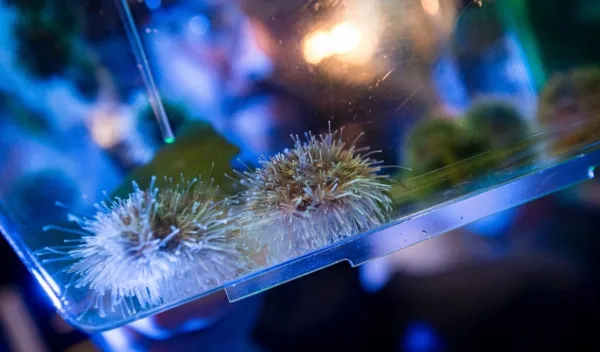
New research centers will investigate effects of ocean-related problems on human health
Millions of tons of small pieces of plastic are finding their way into the world's waters, and then into human beings. The plastics are often eaten by fish and shellfish and then passed to humans when they consume seafood. These plastic particles and other marine-related problems, such as algal blooms, are affecting the health of both waterways and people.
To address these problems, the U.S. National Science Foundation and the National Institutes of Health (NIH) are jointly funding four new Centers for Oceans and Human Health and renewing two others as part of a marine-related health research program. Each center will focus on a different aspect of the connections between the environment, climate and human health. Together, the two agencies are investing more than $42 million over five years, continuing a collaboration that began 20 years ago. The centers foster interdisciplinary collaborations among biomedical researchers, physical and oceanographic scientists and community partners.
"We're excited to continue this long-standing partnership with NIH," said Henrietta Edmonds, a program director in NSF's Division of Ocean Sciences. "Bringing geoscientists, health scientists and community partners together to address important questions has far-ranging impacts beyond what either agency can support alone."
Microplastics, which measure between one micrometer and five millimeters, can be as small as a red blood cell. Even smaller than microplastics are nanoplastics, which measure less than one micrometer in length, the width of a strand of spiderweb silk. The small size of these plastics makes it very easy for them to enter the human body through eating, breathing or even absorption through the skin. Plastics attract and concentrate pollutants and then carry them into new environments. Once they enter the body, they may leech harmful chemicals and affect growth, reproduction and immune system responses.
"We know very little about what these microplastics or even smaller pieces of plastics, known as nanoplastics, can do to human health in the short or long term, or even what they can do to the health of the sea turtles and other animals that live in the ocean," said Anika Dzierlenga, program lead at NIH's National Institute of Environmental Health Sciences.
In addition to addressing the effects of plastics, the centers will investigate the effects of weather and climate on the production of marine toxins and the effect of the toxins on human health.
Center for Oceans and Human Health awardees
This new center will help lay the groundwork to investigate how blooms of cyanobacteria (blue-green algae) in estuaries or coastal waters impact seafood safety and public health. This research will help inform guidelines for the safe consumption of water and seafood. The center will also actively engage with community experts and stakeholders to guide the translation and application of research findings.
The new Scripps Center for Oceans and Human Health will evaluate factors contributing to seafood safety, including impact from climate and weather; distribution of toxic chemicals across the aquatic food source chain; the role of the marine microbiome in toxin metabolism; and animal and human responses to toxic chemicals. The grantees will consider both risks and benefits to seafood consumption and will help to develop messaging to seafood consumers.
This new center will be the first to focus solely on plastic pollution and microplastics. Researchers at the University of Rochester and the Rochester Institute of Technology will collaborative to study will study the life cycle of plastic in Lake Ontario as it pertains to ecological and human health. The aim is to engage diverse local partners to prevent negative health effects of microplastics in the context of climate change in the Great Lakes region. The Great Lakes are the largest surface freshwater system in the world and are a critical resource for more than 30 million people.
Woods Hole Center for Oceans and Human Health, Woods Hole Oceanographic Institution
This center has been renewed in 2024 and will build on its prior research to address how a changing climate could influence harmful algal bloom (HAB) dynamics and human exposure to HAB toxins, a serious and global human health threat. The center will also work to improve awareness of emerging HAB issues for the public health community and develop new educational materials and interactive activities for K-12 classrooms and for health care providers.
NSF and NIH expect to announce two additional awards soon.
